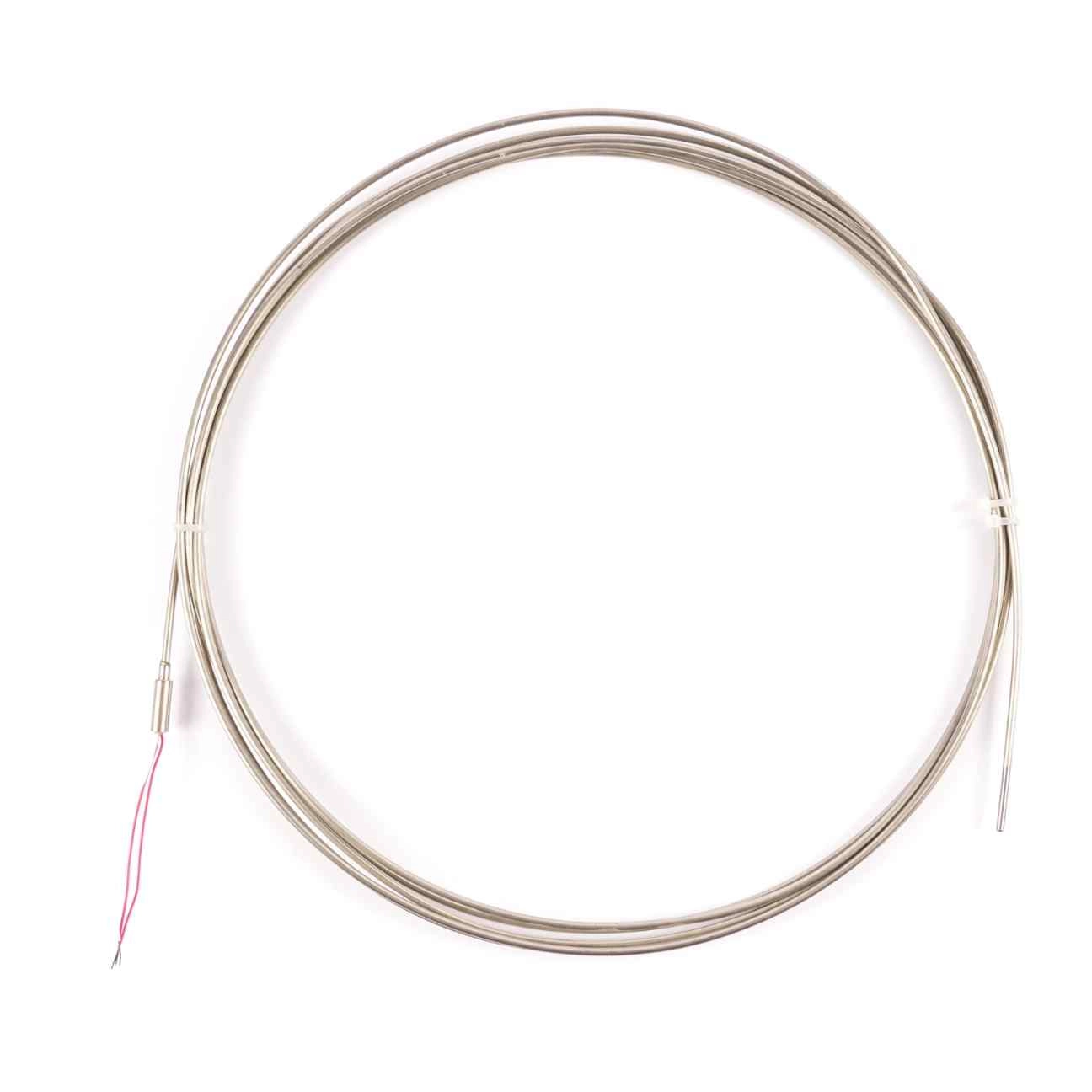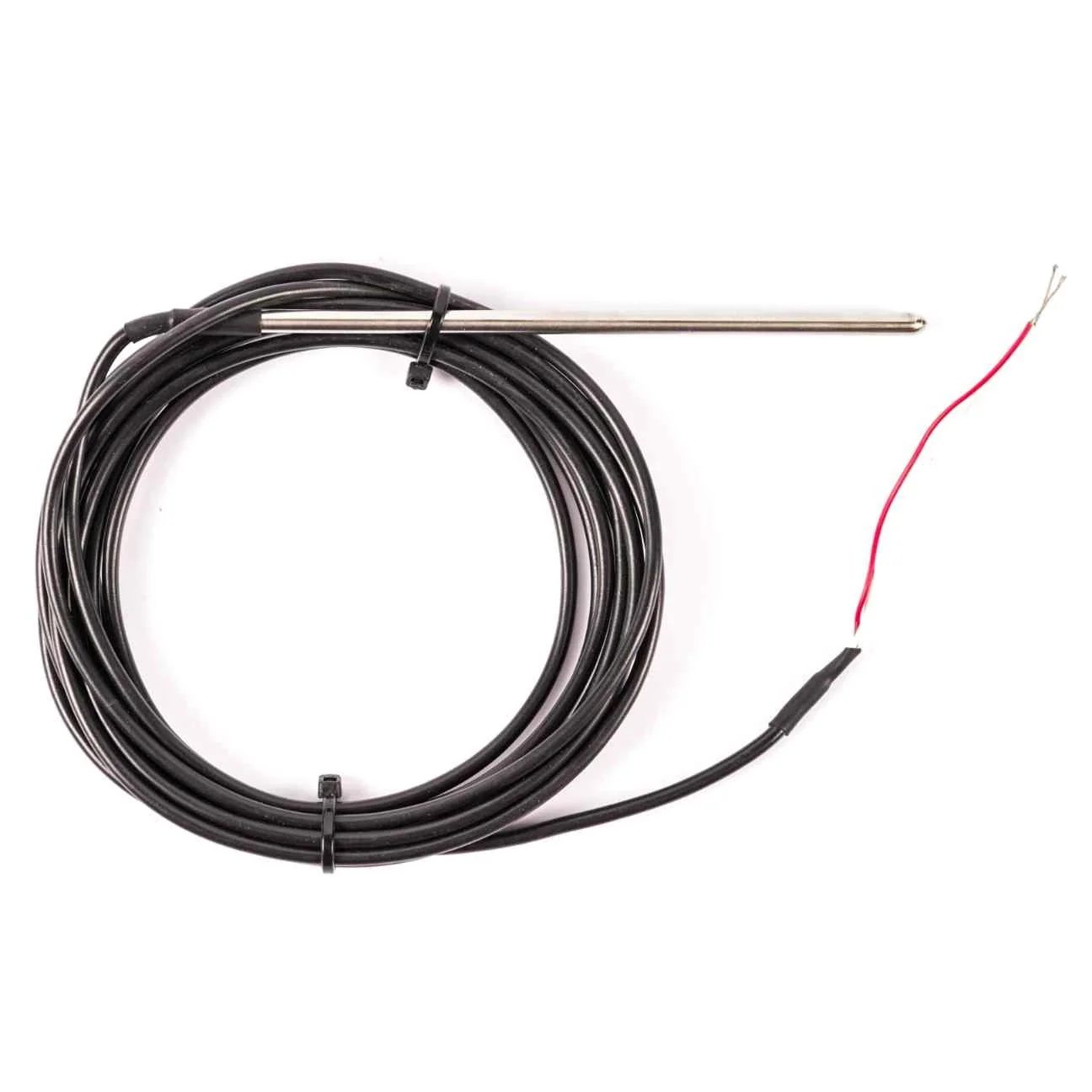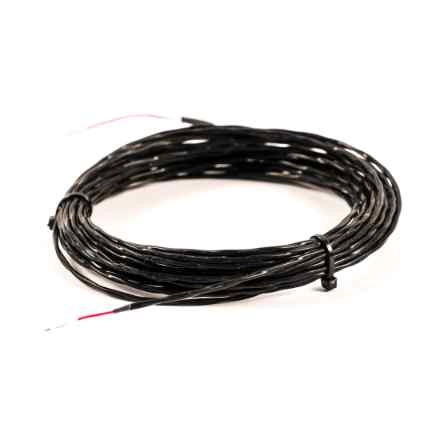What Is A Pt100 Sensor?
TL;DR — Quick Summary
- Pt = Platinum; 100 = 100 ohms at 0°C
- Ideal for accurate, stable, and repeatable readings
- Used across manufacturing, R&D, HVAC, and automation
- Compare with Pt1000 and thermocouples depending on your application
- Easily testable via a multimeter or calibrated bath
- Available in various classes: Class A, Class B, 1/3 DIN for high precision
Introduction: Understanding the Pt100 Sensor
The Pt100 sensor is one of the most widely used types of resistance temperature detectors (RTDs). Known for its precision, stability, and reliability, it plays a critical role in industrial and scientific temperature measurement applications.
In this guide, we’ll explain what a Pt100 sensor is, how it works, how to calibrate and test it, and how it compares to other sensors such as thermocouples and Pt1000s.
What Does “Pt100” Mean?
- Pt stands for platinum, the metal used as the sensing element.
- 100 refers to its resistance of 100 ohms (Ω) at 0°C.
A Pt100 sensor works on the principle that the electrical resistance of platinum increases in a predictable way as temperature rises. Because of this property, platinum is ideal for creating accurate and repeatable temperature measurements.
What Is an RTD Sensor?
RTD stands for Resistance Temperature Detector. It is a temperature sensor that uses a metallic element, often platinum, whose resistance changes with temperature. The Pt100 is simply the most common type of RTD.
Other common names include:
- RTD sensor
- Platinum RTD
- Pt100 RTD
- Pt1000 RTD
How Does a Pt100 Sensor Work?
The Pt100 sensor operates on a simple but highly effective principle: As temperature increases, the resistance of the platinum wire also increases. A precision measurement of this resistance allows the sensor to calculate the temperature, often through a signal conditioning circuit or via calibration tables. Thanks to the linear and stable nature of platinum, Pt100 sensors provide high accuracy and repeatability, making them ideal for critical measurement environments.
Maximum Temperature Rating of Pt100 Sensors
The maximum temperature a Pt100 sensor can measure depends on its design, insulation, and sheathing material:
| Type of Pt100 Sensor | Maximum Operating Temperature |
|---|---|
| Standard Pt100 (Industrial Use) | Up to 600°C (1112°F) |
| High-Temperature Industrial Pt100 | Up to 850°C (1562°F) |
| Specially Designed Pt100 (Lab Use) | Up to 1000°C (1832°F) |
⚠️ Always check the manufacturer’s specification for exact limits.
How to Calibrate a Pt100 Sensor
Calibrating a Pt100 temperature sensor ensures accuracy and consistency. Here’s how the process typically works:
- Place the sensor in a controlled temperature source (e.g. a dry block calibrator or temperature bath).
- Compare its readings with a traceable reference thermometer.
- Record deviations and adjust the instrumentation or apply correction factors if required.
Regular calibration is essential in quality control, manufacturing, and laboratory environments.
How to Check a Pt100 Sensor With a Multimeter
You can perform a basic functionality check of a Pt100 sensor using a digital multimeter:
- Set the multimeter to measure resistance (Ω).
- Disconnect the sensor from any circuit or power source.
- Connect the multimeter probes to the sensor terminals.
- Read the resistance value:
- At 0°C, it should be close to 100Ω.
- Use a Pt100 resistance vs temperature chart to interpret the reading.
This method is useful for checking if the sensor is functioning, but it won’t give you an exact calibration.
How to Test a Pt100 Temperature Probe for Accuracy
For a more thorough test:
- Expose the sensor to known temperatures (e.g. ice bath at 0°C or boiling water at 100°C).
- Compare its readings against a calibrated reference.
- Look for linearity, repeatability, and response time.
Testing can also reveal issues such as sensor drift, hysteresis, or damage.
Pt100 vs Pt1000: Which One Is Better?
| Feature | Pt100 | Pt1000 |
|---|---|---|
| Resistance at 0°C | 100Ω | 1000Ω |
| Susceptibility to cable resistance | Higher | Lower (ideal for long cables) |
| Accuracy | High (widely standardised) | Very high (depends on use case) |
| Industrial Use | More common | Growing in popularity |
- Choose Pt100 for compatibility with most industrial systems.
- Choose Pt1000 when you need long cable runs or higher signal resolution.
What’s the Difference Between RTD and Pt100?
The term RTD is a general category, while Pt100 refers to a specific type of RTD sensor.
- RTD: Any sensor that measures temperature via resistance change.
- Pt100: A platinum RTD with a resistance of 100Ω at 0°C.
Think of Pt100 as a subcategory of RTD.
What Are The Main Differences Between PT100 Sensors And Thermocouples?
No, a Pt100 is not a thermocouple. Use Pt100 when accuracy and stability are key. Use thermocouples when measuring very high temperatures or in cost-sensitive applications.
| Feature | Pt100 (RTD) | Thermocouple |
|---|---|---|
| Measurement Principle | Resistance change | Voltage generation between dissimilar metals |
| Material | Platinum | Two different metals (e.g. nickel-chrome) |
| Accuracy | Higher | Lower (but faster response) |
| Cost | Generally higher | Lower |
How Accurate Is a Pt100 Sensor?
Pt100 sensors are available in different accuracy classes, including:
| Accuracy Class | Typical Tolerance Range |
|---|---|
| Class A | ±0.15°C from -50°C to +150°C |
| Class B | ±0.3°C from -50°C to +200°C |
| 1/3 DIN | ±0.1°C or better (precision applications) |
| 1/10 DIN | Ultra-precise (laboratory-grade performance) |
Pt100 vs Thermocouple: Which Is Right for You?
Here’s a comparison to help decide between a Pt100 sensor and a thermocouple:
| Feature | Pt100 Sensor | Thermocouple |
|---|---|---|
| Accuracy | Higher | Moderate |
| Temperature Range | Up to ~600°C (some to 1000°C) | Up to ~1700°C (depending on type) |
| Stability | Very stable | More prone to drift |
| Cost | Higher | Lower |
- Choose Pt100 if accuracy and reliability are key.
- Choose thermocouple if you need wide temperature range or fast response at a lower cost.
Can You Recommend The Best PT100 Sensors For Precise Temperature Measurement?
For precise temperature measurement, Pt100 sensors with wire-wound elements and Class A or 1/10 DIN accuracy offer the best performance. At Peak Sensors, we provide premium Pt100 sensors designed for both industrial and laboratory applications, combining fast response times, excellent stability, and rugged construction to ensure reliable, repeatable results.
What Should I Consider When Choosing A Pt100 Rtd For Laboratory Use?
When selecting a PT100 RTD for laboratory use, accuracy and response time are paramount. Choose sensors with high purity platinum elements and tight tolerance classes (Class A or better) for precise measurements. Also, consider the sensor’s sheath material to avoid contamination, and ensure compatibility with your measurement equipment. Calibration certification and long-term stability are also essential for reliable lab results.
Conclusion: Why Choose a Pt100 Sensor?
Pt100 sensors are trusted across industries for their accuracy, durability, and consistency in temperature measurement. From manufacturing to scientific research, their performance and precision make them an ideal choice where temperature data matters.
Key Benefits:
- Exceptional accuracy
- Excellent long-term stability
- Compatibility with industrial controllers and PLCs
- Wide range of models and configurations
For critical applications where trust, performance, and compliance matter, Pt100 sensors remain the industry standard.
Frequently Asked Questions (FAQ)
What does “Pt100” stand for?
Pt = Platinum
100 = 100 ohms resistance at 0°C
Is a Pt100 sensor the same as an RTD?
Yes. Pt100 is a type of RTD made with platinum and 100 ohms resistance at 0°C.
How do I check if my Pt100 sensor works?
Use a multimeter to measure resistance. At room temperature, it should be around 109–112 ohms.
How often should a Pt100 sensor be calibrated?
- For critical applications: every 6–12 months
- For general use: annually or as required by your quality system
Can I use a Pt100 in a high-vibration environment?
Yes — but use a rugged, encapsulated design. Contact us for custom sensor builds.
Which is better: Pt100 or Pt1000?
It depends:
- Use Pt100 for industry-standard compatibility
- Use Pt1000 for long cable runs or if lead wire resistance is a concern
Does the cable length affect Pt100 accuracy?
Yes, especially in 2-wire configurations. We recommend 3- or 4-wire setups for accurate measurement over distance.
View Our Resistance Thermometers
If you want to order a temperature sensor or you are unsure exactly what you need, get in touch and we can help you.




